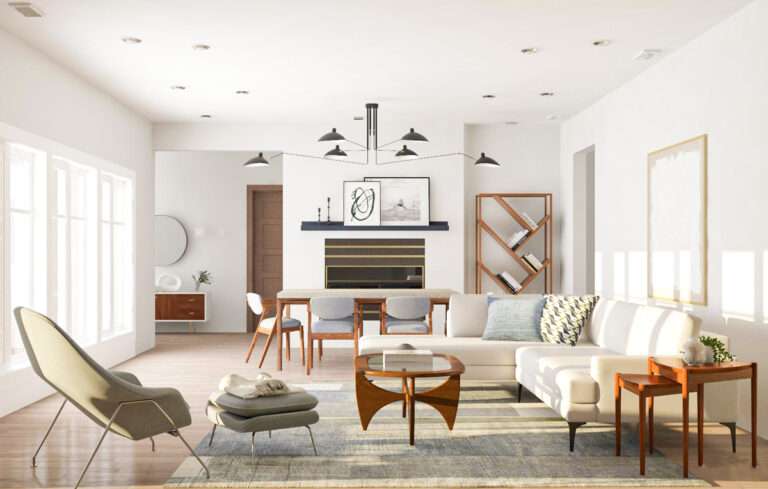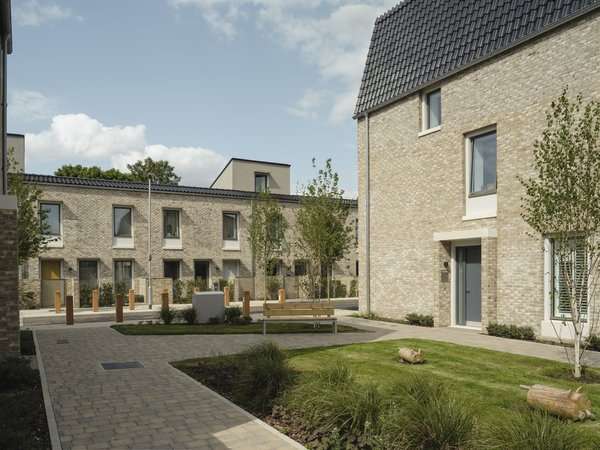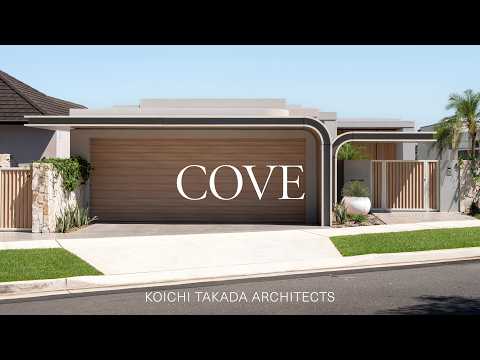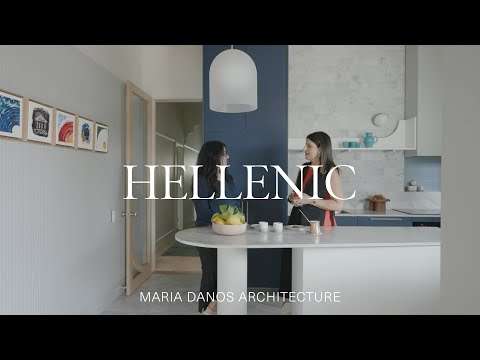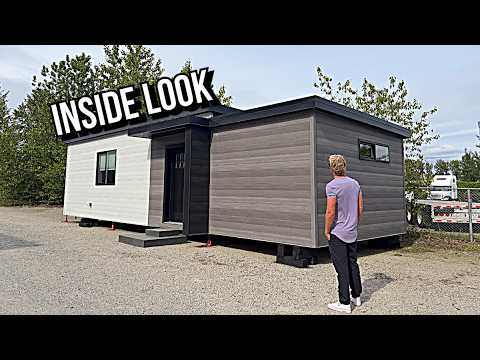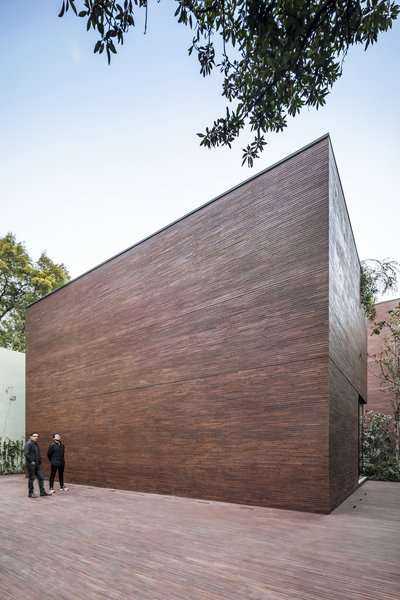Tucked away in the Hoge Veluwe National Park in the Netherlands lies a unique haven – Buitenplaats Koningsweg – for artists and visitors alike. The former barracks site has been transformed into a vibrant community where dozens of creatives live and work. Now, as part of an innovative project by the municipality of Arnhem, a series of 11 “follies” have emerged within the woods, offering an opportunity for guests to immerse themselves in the forest. One of said follies is the Buitenverblijf Nest, an elevated cabin that blends in with its natural surroundings. Designed by NAMO Architecture and i29 Architects, the Nest is an unforgettable escape for anyone seeking tranquility while still having the creature comforts of home.
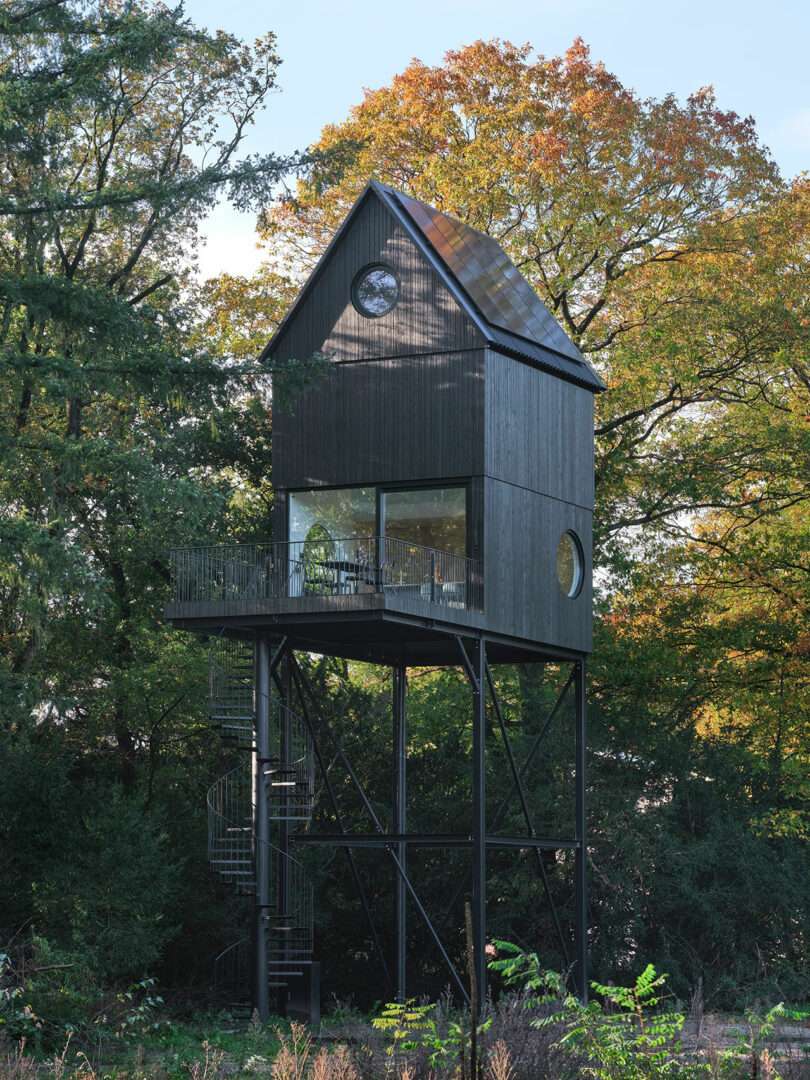
Nest is a holiday home that resembles a modern birdhouse, perched high alongside the treetops. Its sleek design, marked by a three-story tiny house atop a slim black base, is built with sustainability in mind. Constructed with high-quality materials that have minimal, if any, impact on the environment, the cabin is outfitted with all-electric installations, a highly insulated envelope, and solar panels on its sloped roof.
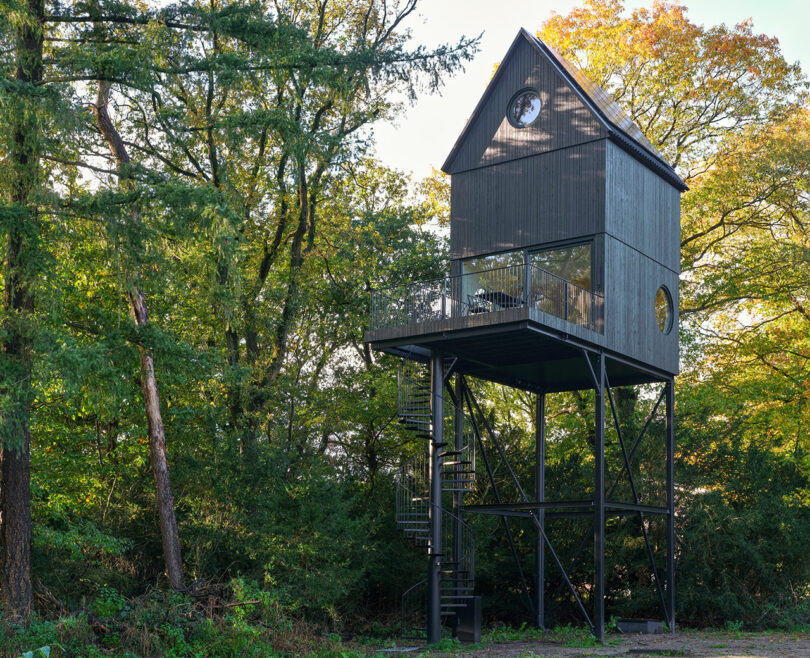
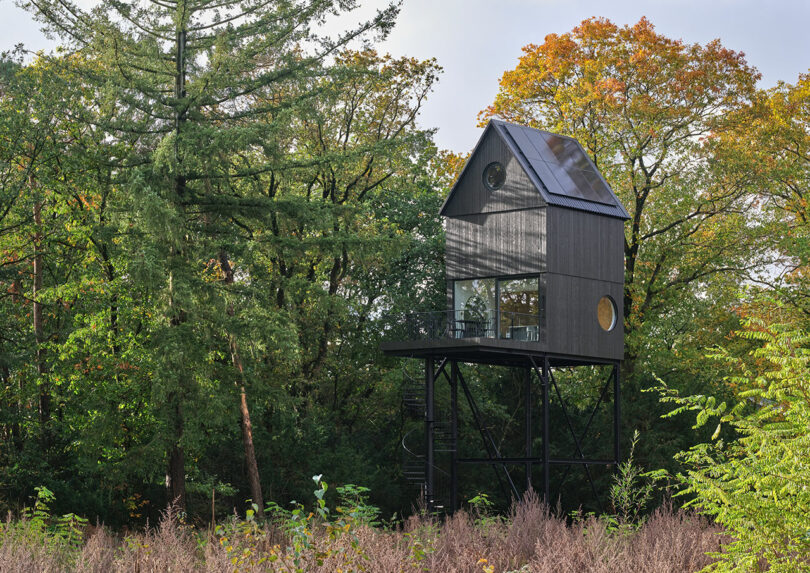
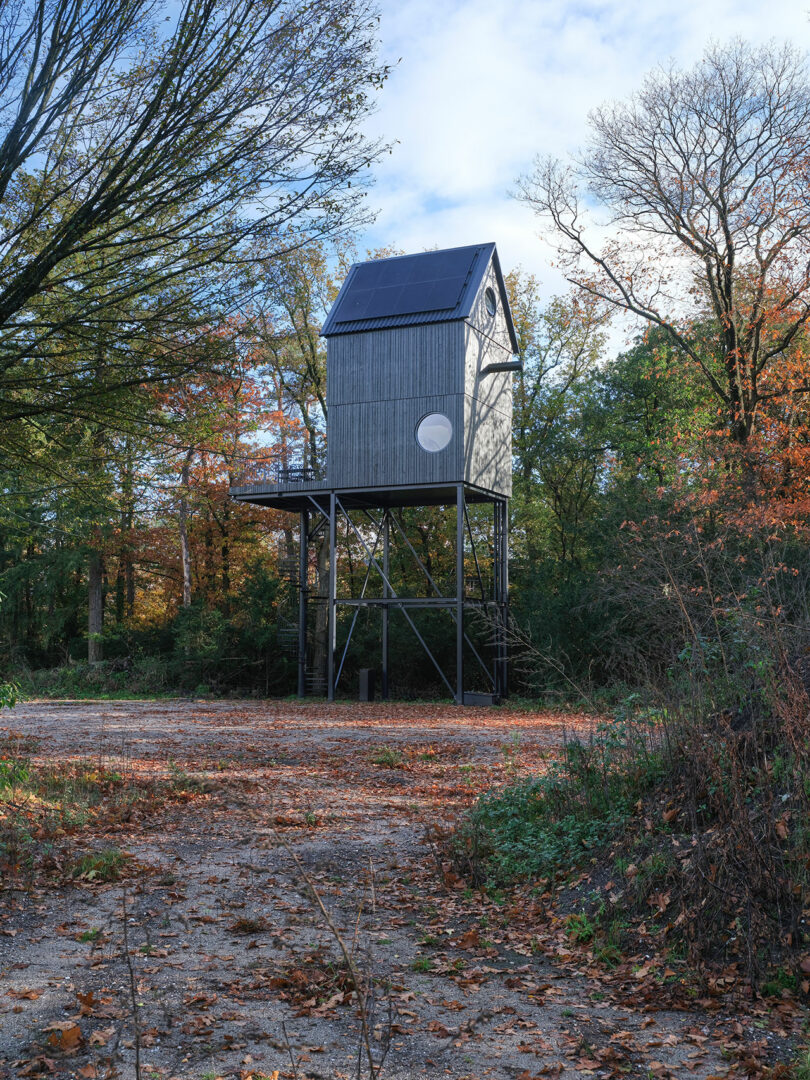
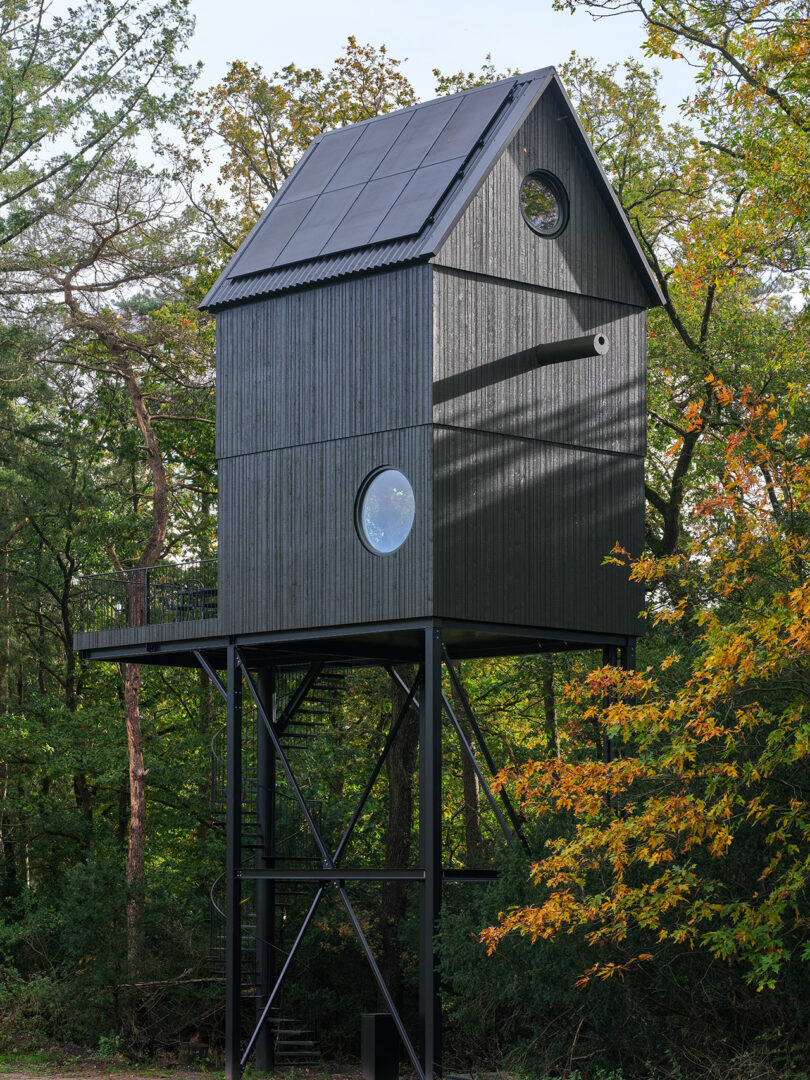
Nesting boxes on the exterior, which look like perches on a birdhouse, are built so that nuthatches, woodpeckers, and bats have a place to shelter. The black steel frame under the house also provides protection for nests and local animals.
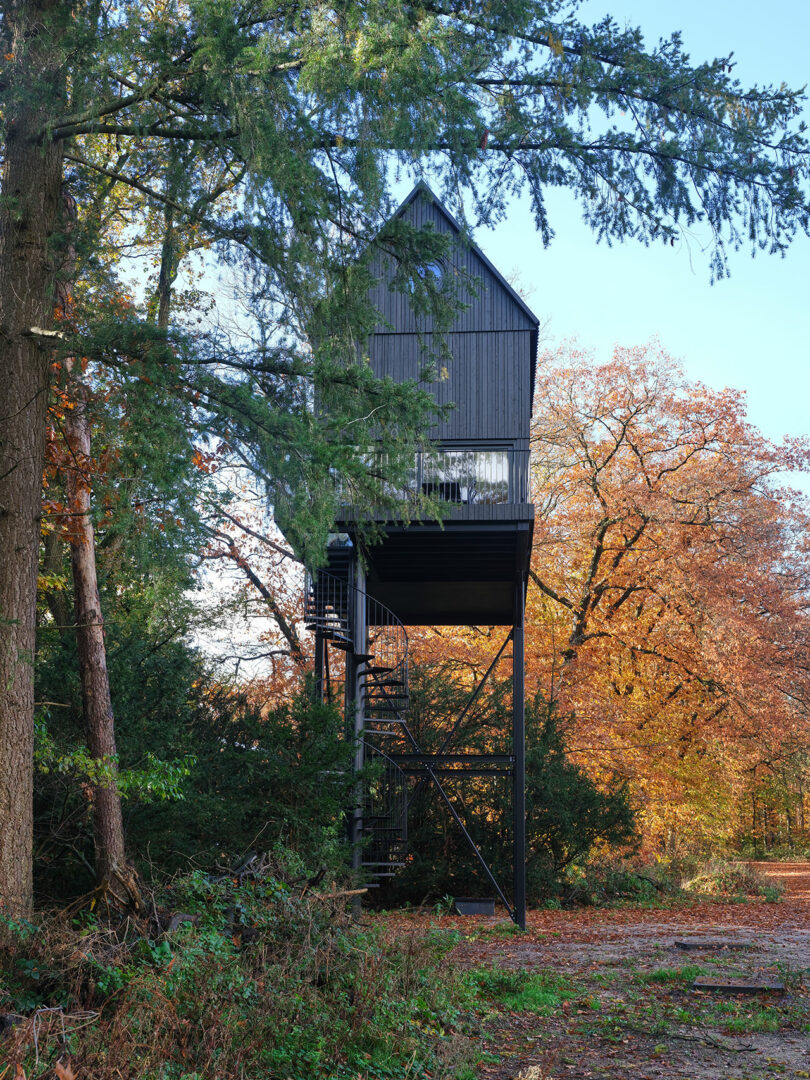
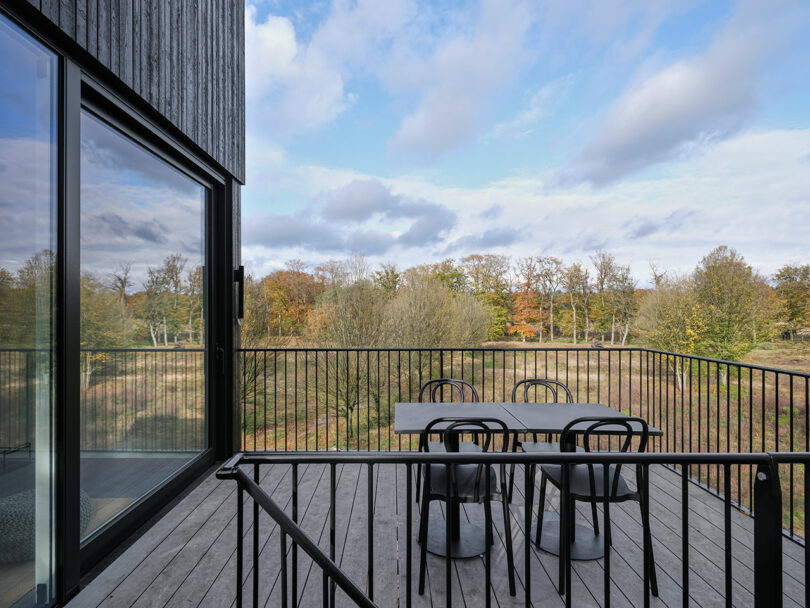
A front deck allows guests to enjoy a meal or a cup of coffee while taking in the surrounding landscape. A floor-to ceiling sliding glass door opens up the compact main floor to expand out to the terrace.
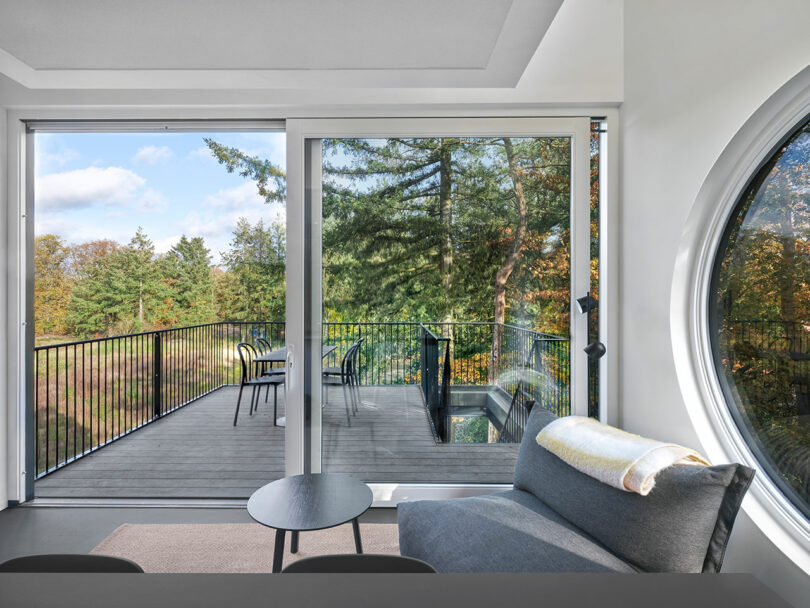
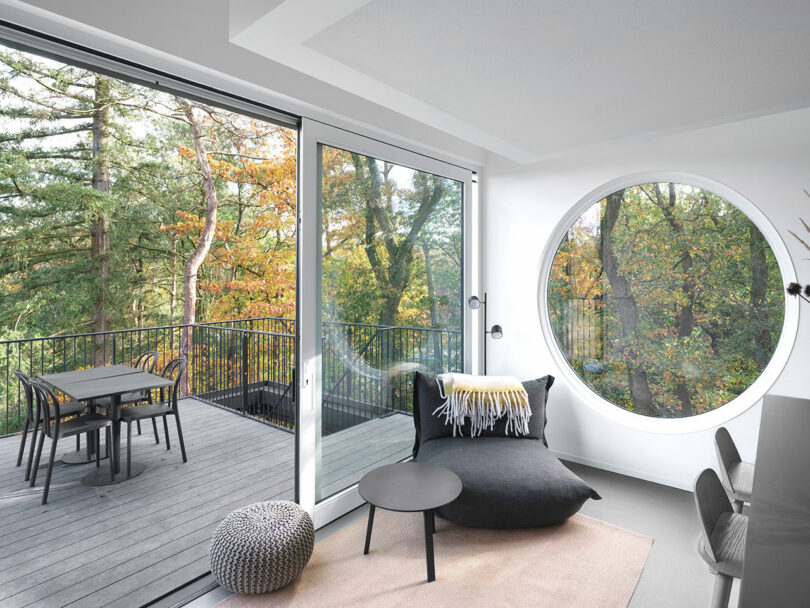
Oversized round windows frame views of the trees and wildlife while allowing natural light to keep the interior feeling open and airy.
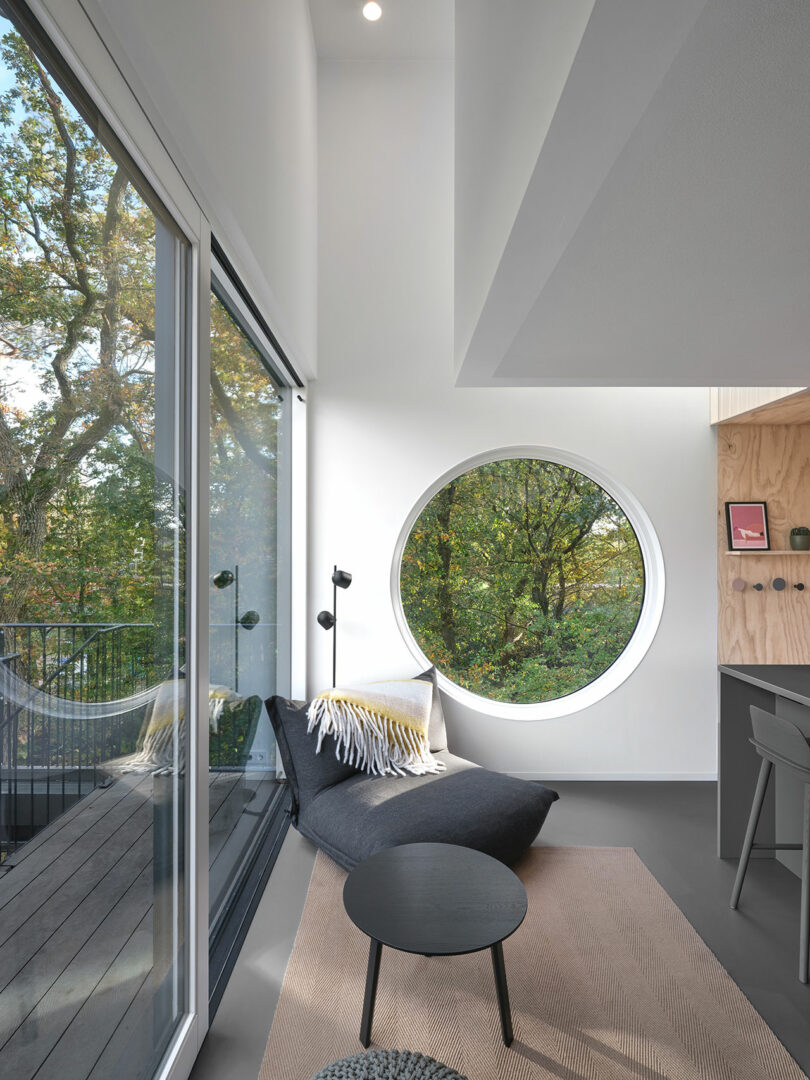
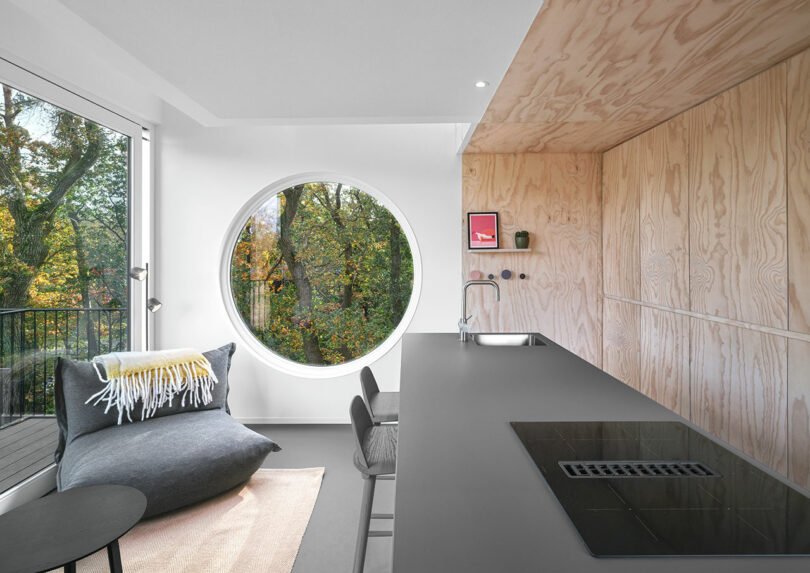
Approximately eight meters off the ground, the first level houses the open kitchen and living room with adjacent terrace.
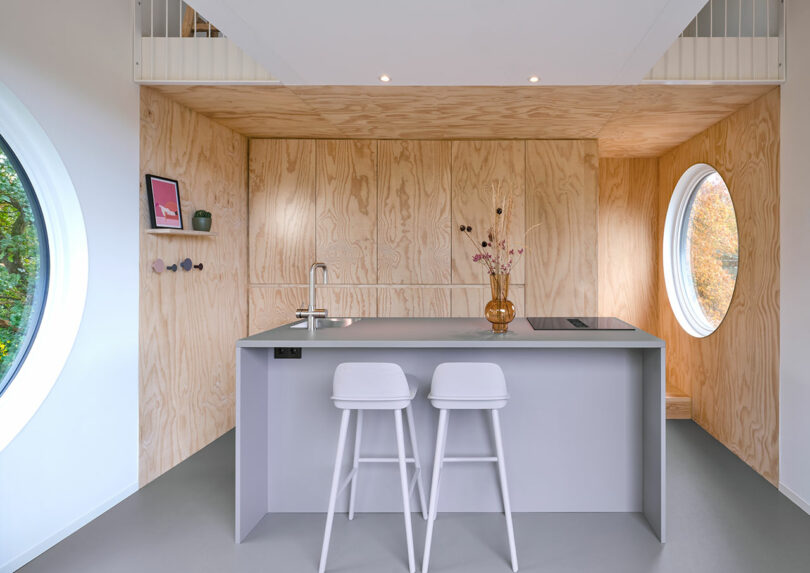
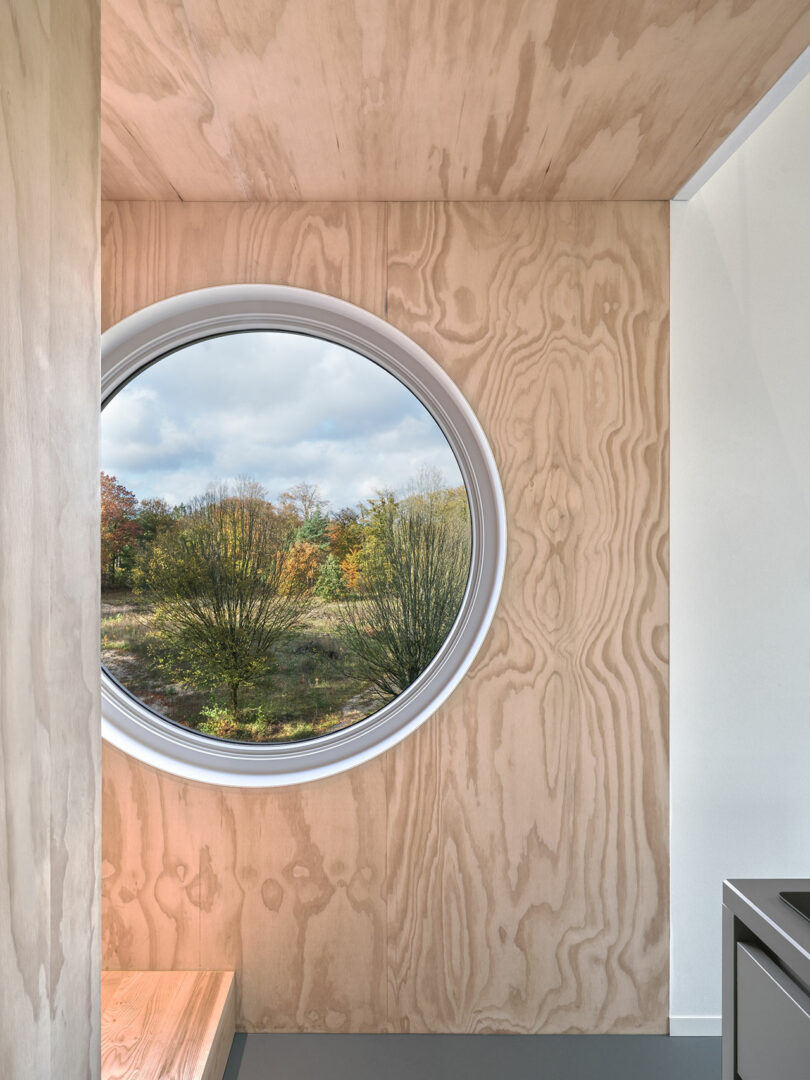
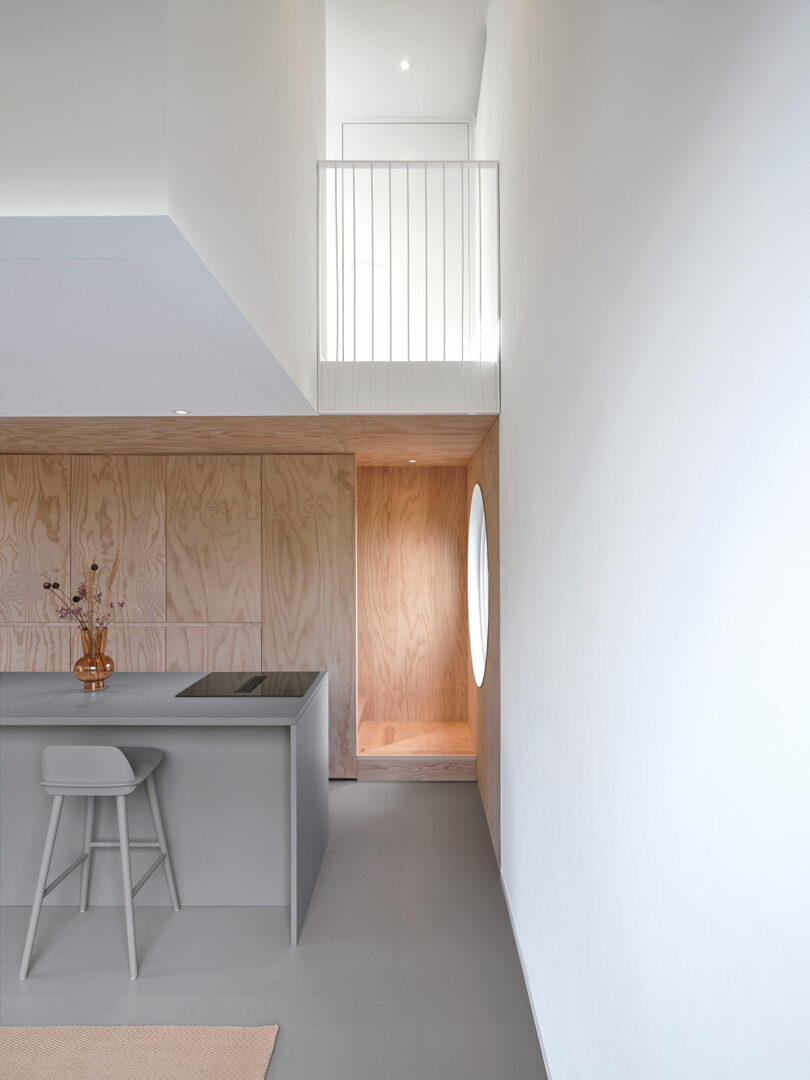
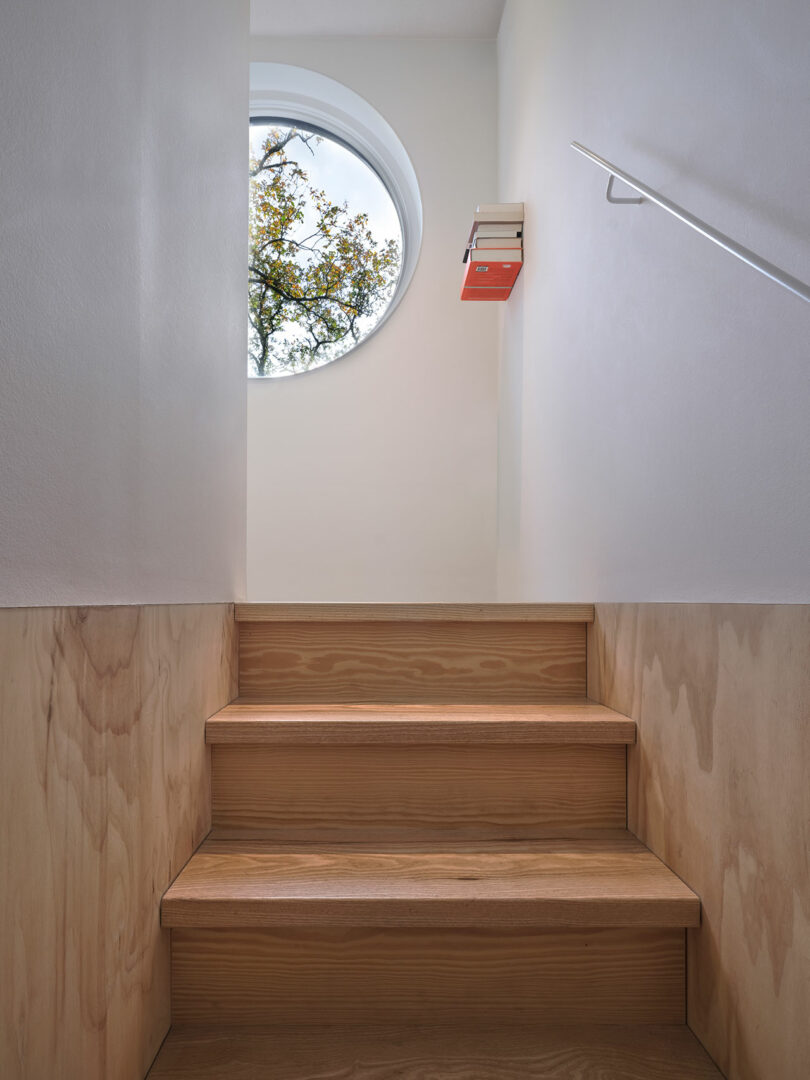
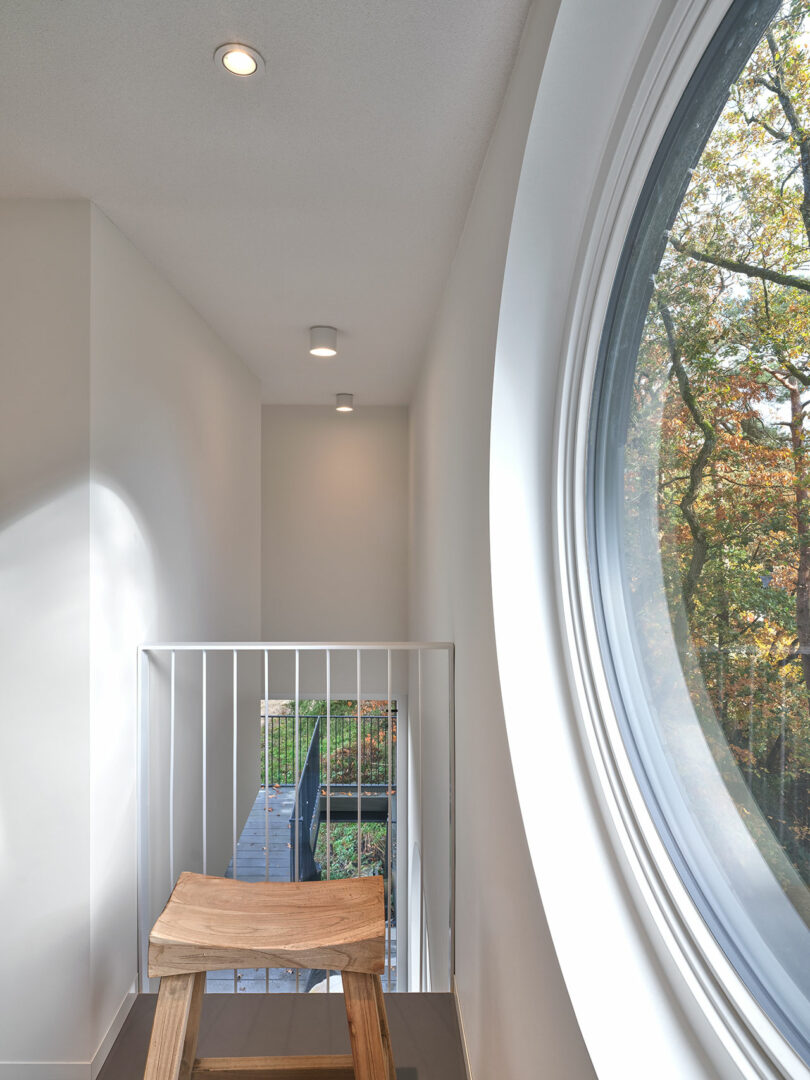
Wooden stairs lead to the middle level with the bathroom, which also features round windows so nature can be enjoyed while getting ready for the day.
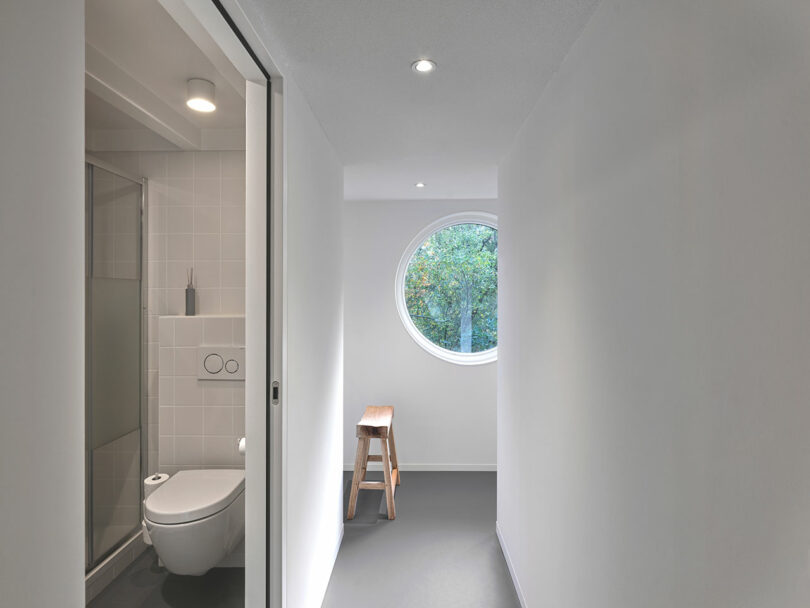
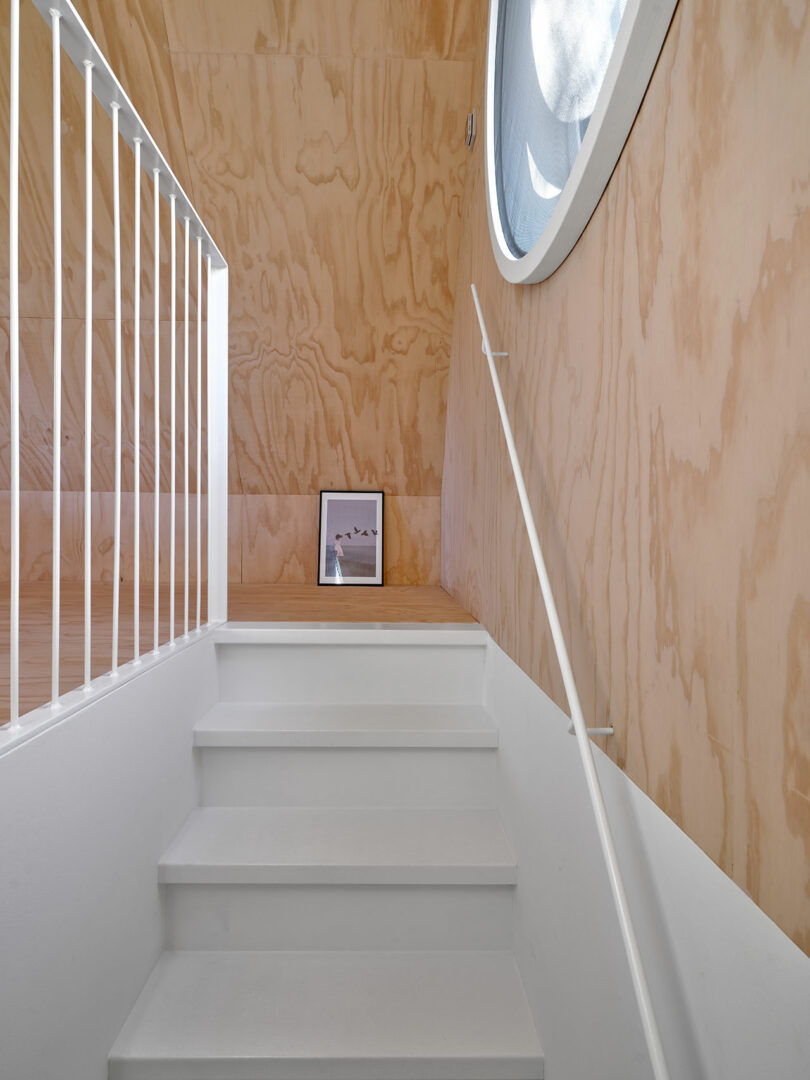
Another staircase leads to the bedroom, which sleeps four people side-by-side. The sloped wood roof creates a cozy spot to retire to at the end of the day to really make you feel like you’re one with the birds and the trees.
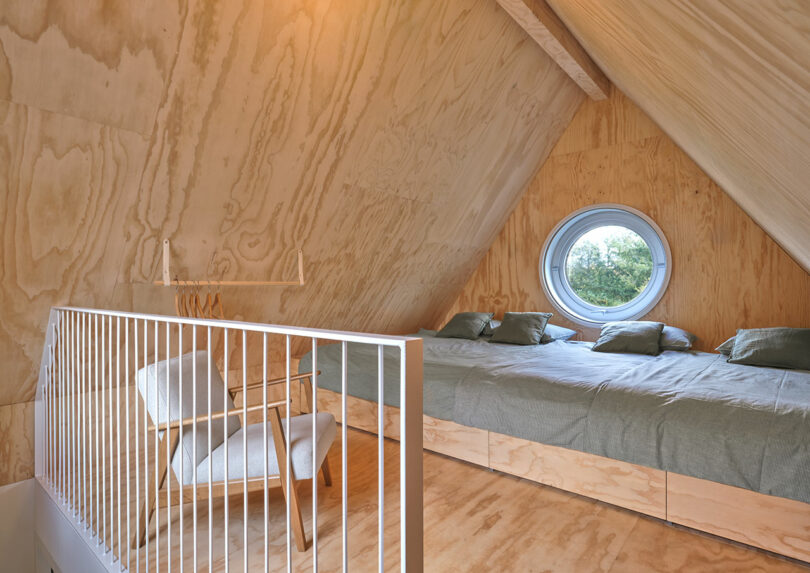
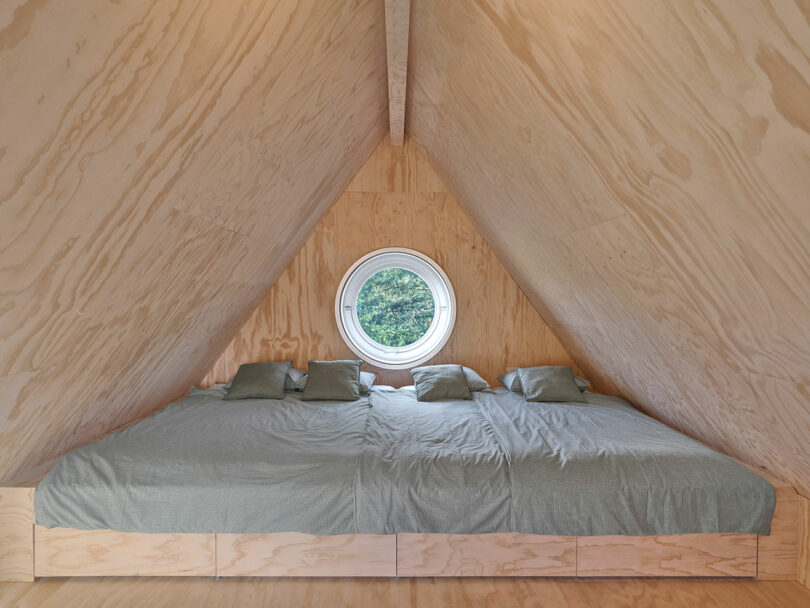
If you’re looking to escape to nature but still want to be comfortable, the Buitenverblijf Nest elevated modern cabin can be yours for approximately US $179 per night. More info here.
Photography by Jeroen Musch.

